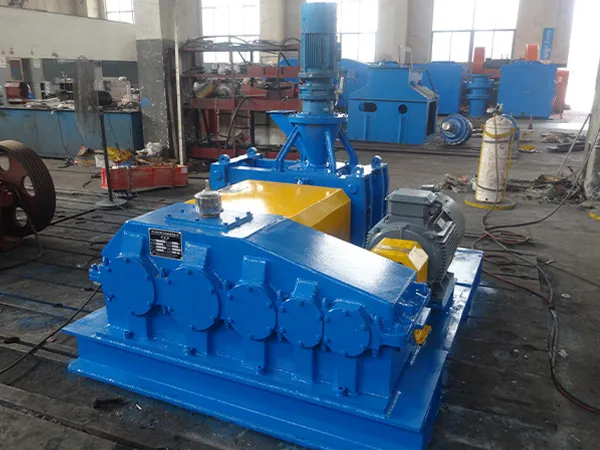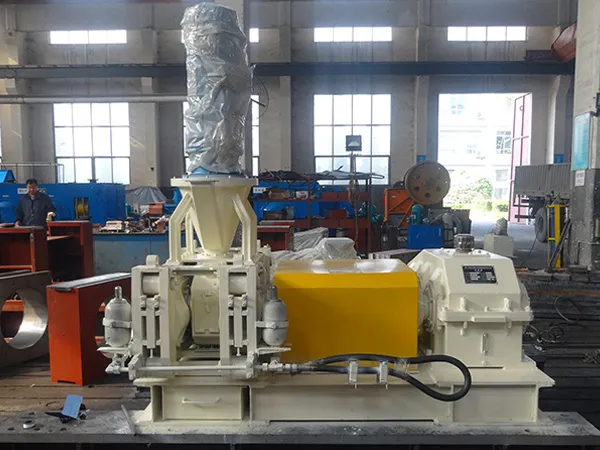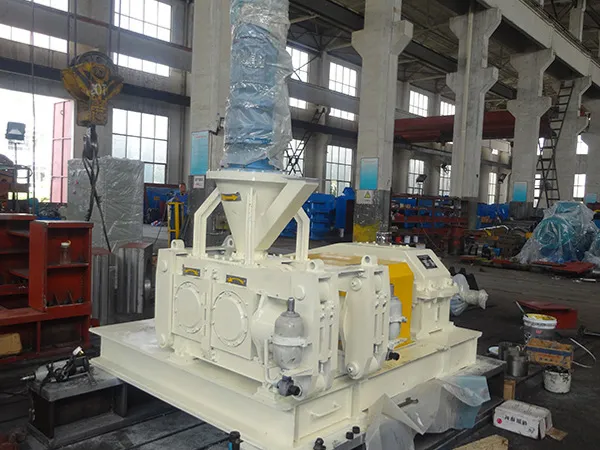

-
Products
-
Application


In a modern industrial landscape increasingly focused on resource efficiency and environmental protection, briquetting technology is becoming a critical component for businesses to achieve sustainable operations. It's not only an efficient solid waste treatment solution, but also an innovative way to transform low-value waste into high-value resources. Briquetting machines, the core equipment in this transformation, use powerful physical compression to shape loose, difficult-to-handle raw materials into dense, standardized blocks (such as "coal briquettes," "metal briquettes," or "biomass fuel rods"). This article will provide an in-depth understanding of the different types of mainstream industrial briquetting machines on the market and detail their unique applications and significant value in various industrial sectors.
Briquetting Machines: Core Working Principles and Transformative Advantages
Although industrial briquetting machines come in a wide variety of types and structures, their key principle lies in applying tremendous pressure to effectively eliminate gaps between material particles, forcing them to form a tight bond. This seemingly simple process offers a series of revolutionary industrial advantages:
Extreme Volume Compression, Optimizing Logistics and Storage: Material volume is significantly reduced, significantly saving transportation costs and storage space, and improving logistics efficiency.
Significantly Improved Energy Efficiency and Calorific Value: For biomass fuels, pulverized coal, and other materials, briquetting increases density, resulting in more complete combustion, higher calorific value, and significantly increased energy efficiency.
Environmentally Friendly, Reducing Pollution Risks: Effectively controlling dust and airborne particles, the briquetting of industrial waste into blocks facilitates handling and recycling, significantly reducing environmental pollution.
Transforming Waste into Treasure, Creating Added Economic Value: Industrial waste that would otherwise be landfilled or disposed of at low cost is transformed into reusable products with higher utilization value.
Now, let’s take a closer look at the main types of briquetting machines and their specific industrial applications across various industries.

Operating Principle: A mechanical punch briquetting machine primarily relies on a crank-connecting rod mechanism or hydraulic system to drive a punch, periodically pressing the material within the die cavity at high speed. Its design features provide significant advantages in high production efficiency and high molding pressure.
Core Applications:
Coal Energy Industry: Widely used to press pulverized coal, coke powder, and other materials into high-quality briquettes for use in industrial boilers, residential heating systems, and power plants, significantly improving the comprehensive utilization of coal resources and effectively controlling dust emissions.
Ferrous and Non-ferrous Metallurgy: Efficiently presses various metal scraps, such as iron powder, aluminum chips, and copper chips, into briquettes that can be directly recycled into the furnace for smelting, significantly reducing metal loss and smelting energy consumption.
Carbon Material Processing: Excellent performance in briquetting carbonaceous materials such as charcoal powder, carbon black, and graphite powder, ensuring product density and consistency.
Working Principle: Utilizing an advanced hydraulic transmission system, hydraulic cylinders generate stable and intense pressure, statically compressing and molding materials within a closed mold. Hydraulic briquetting machines feature a wide adjustable pressure range and extremely high stability, making them particularly suitable for materials with stringent molding pressure requirements.
Core Applications:
Metal Processing and Recycling: Cold-presses various metal shavings, such as cast iron, steel, copper, and aluminum, into briquettes. This process requires no heating or binders, allowing direct input into the furnace, significantly reducing melting losses and production costs.
Biomass Clean Energy: Compresses biomass feedstocks such as sawdust, straw, rice husks, and peanut shells into high-density biomass fuel briquettes, effectively replacing traditional coal as a clean energy source.
Refractory Manufacturing: Precision-presses various refractory powders to create high-density, high-strength refractory bricks or custom-shaped refractory blocks.
Ceramics and Minerals: Widely used for the precise compaction and molding of ceramic powders, as well as the solidification and resource utilization of tailings and mineral fines.

Working Principle: A screw briquetting machine continuously compresses the material using a screw propeller. The friction between the screw blades and the cylinder wall, as well as the machine's internal friction, squeezes the material and compacts it into a compact shape. This type of machine is particularly suitable for processing materials with low moisture content and high fibrous content.
Core Applications:
Biomass Fuel Rod Production: Ideal for producing high-density, high-strength biomass fuel rods with a long combustion time, especially for wood chips and crop straw.
Agricultural Feed Processing: Pressing feed ingredients such as corn stalks and forage grass into feed briquettes greatly facilitates storage and transportation, and effectively increases animal feed intake.
Working Principle: The material passes between two sets of counter-rotating rollers, where it is subjected to high pressure in the roller gap and compacted into a compacted shape. The roller surfaces are typically designed with identical grooves, which form the briquetting mold.
Core Application Areas:
Coal and Coking Industry: Highly efficient briquetting, particularly suitable for the batch, continuous production of pulverized coal and coke, with extremely high efficiency.
Mineral Resource Development: Widely used for pelletizing various mineral powders, such as iron ore concentrate, manganese ore, chromium ore, and phosphate rock, facilitating subsequent smelting and long-distance transportation.
Fine Chemical Production: Compressing chemical powders such as gypsum, alumina, and fertilizer into blocks or pellets, increasing product added value.
Metallurgical Solid Waste Treatment: Effectively briquetting and recycling metallurgical waste such as steel slag and dust removal ash.
Lime Kiln and Building Materials: Efficiently processing lime powder by compacting and shaping.

From coal energy to metal recovery, from biomass utilization to chemical raw material processing, briquetting machines, with their diverse models, superior performance, and strong adaptability, play an irreplaceable and core role in reducing industrial costs, improving production efficiency, achieving resource recycling, and protecting the environment.
As the global industry pursues intelligent, energy-saving, and environmentally friendly production models, future briquetting machine technology will undoubtedly continue to innovate, contributing significantly to building a greener and more sustainable industrial production system.
Your Customized Briquetting Solution
If you're exploring how to optimize production processes, improve resource efficiency, and find the most suitable briquetting solution for your business, a thorough understanding of the working principles, technical features, and specific application scenarios of different briquetting machine types is crucial for making the most informed choice.
Contact our expert team today for professional consultation and customized solutions. Together, we can create greater economic and environmental benefits for your industrial production!

Official Agent of ZY MINING in Russia.
Please enter here.
Add: Luoxin Industrial Zone,Luoyang City,Henan Province P.R.C.
Tel: +86-379-67313306
E-mail: gloria@zyksjx.com